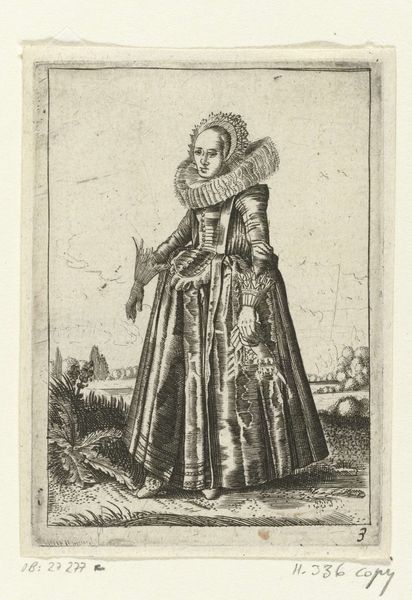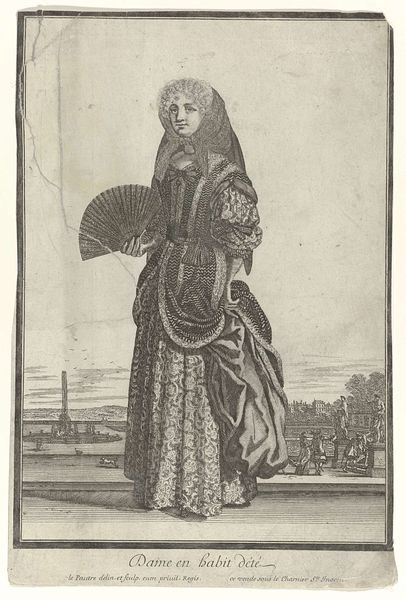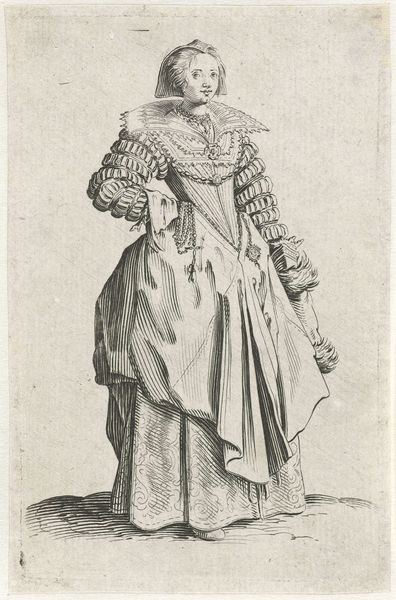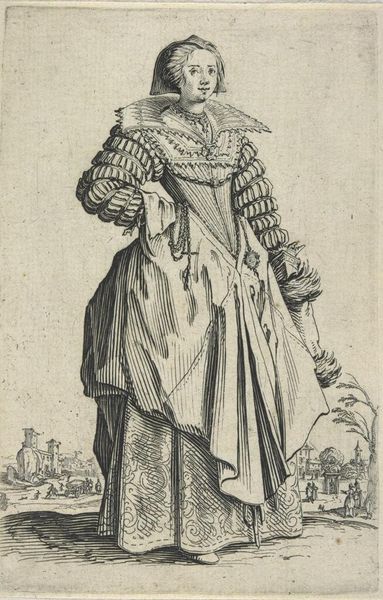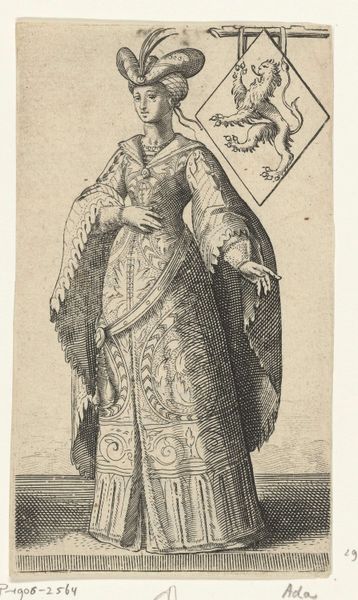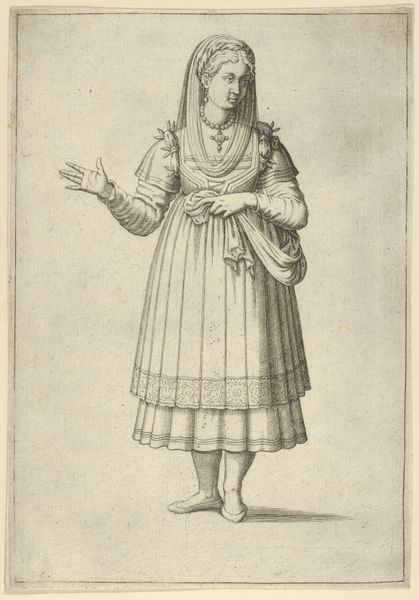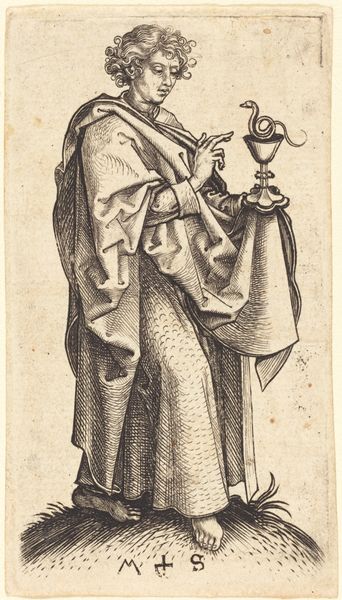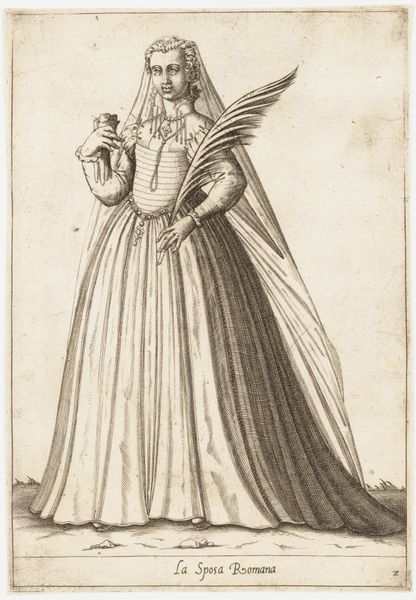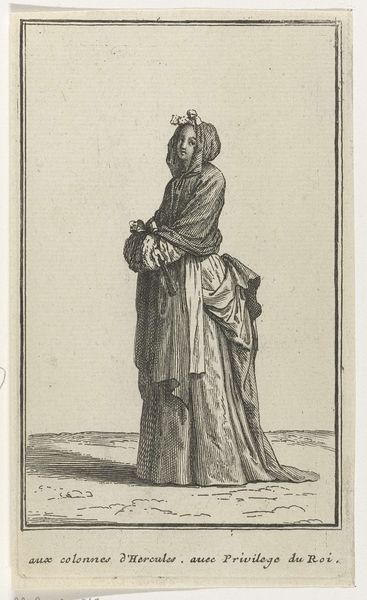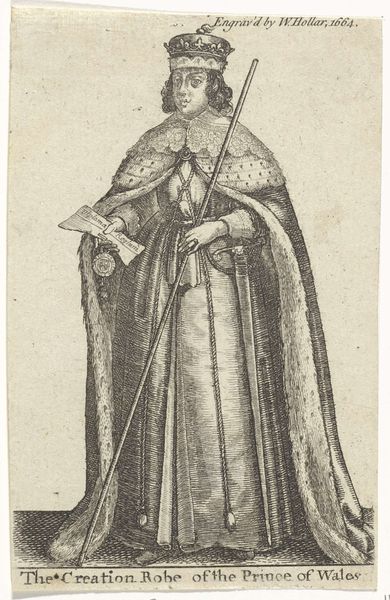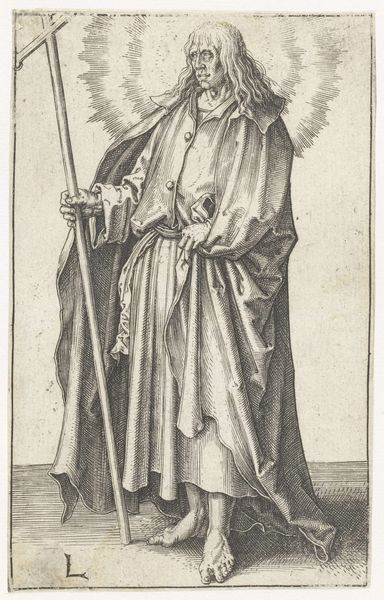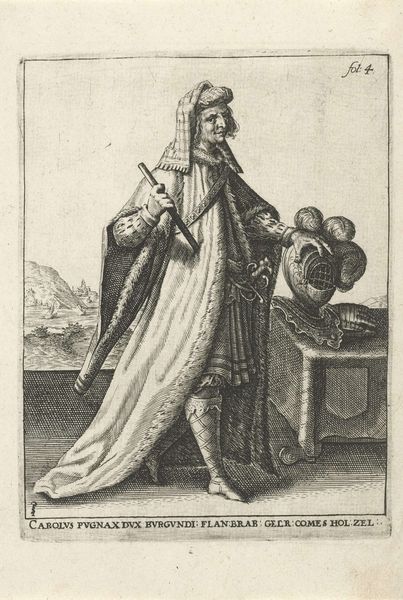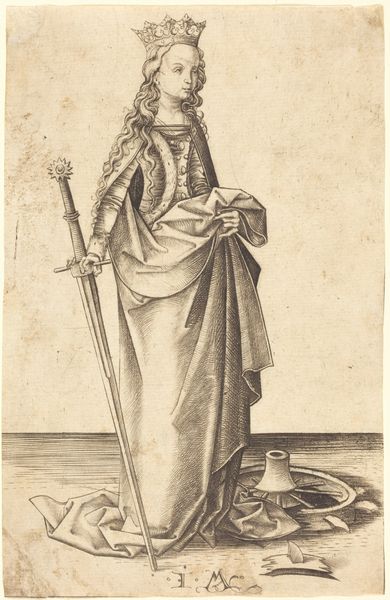
Portret van Jacoba van Beieren, gravin van Holland, Zeeland en Henegouwen 1620
0:00
0:00
adriaenmatham
Rijksmuseum
print, engraving
#
portrait
#
baroque
# print
#
old engraving style
#
figuration
#
line
#
history-painting
#
engraving
Dimensions: height 130 mm, width 80 mm
Copyright: Rijks Museum: Open Domain
Curator: Look at the formality in this 1620 engraving by Adriaen Matham, a "Portret van Jacoba van Beieren, gravin van Holland, Zeeland en Henegouwen" housed right here at the Rijksmuseum. The weight of line used gives Jacoba an almost otherworldly grandeur. Editor: Grandeur, yes, but I see something else too. The almost excessive detail in her fur-trimmed gown feels less celebratory and more like she's burdened, confined by expectations. A gilded cage comes to mind. Curator: Note the way the chain drapes almost lifelessly through her fingers. Jacoba's gaze is averted, giving it a sort of sad symbolism, no? As though she understands power comes with certain heavy responsibilities. It gives emotional weight to an era in which symbolic displays communicated cultural memory. Editor: And let's remember who Jacoba was: a woman ruling in her own right in the 15th century. This image, created later, participates in shaping her legacy. Consider the coat of arms prominently displayed beside her. The symbols are not just decorative; they are reinforcing claims to power, particularly given the turmoil and conflicts of her reign. Curator: Symbols tell a story if we're ready to listen! Look how she is draped in fur, itself a symbol of wealth. Yet its textural intensity creates an almost claustrophobic effect. Editor: Exactly. There’s a tension there, a visual push and pull. The engraver presents us with an image intended to evoke power but simultaneously hints at the personal cost. To me, Matham isn't simply memorializing her rank, but also suggesting she carried a profound weight because of it. A weight amplified because of her gender. Curator: We get to perceive Matham shaping, and solidifying the archetype of the "powerful noble," a consistent pattern that played across the art of the time. What has resonated across centuries remains quite poignant, doesn't it? Editor: It does. By looking closer at works like this, we start seeing not only the idealized historical figures, but also the human beings beneath those layers of inherited meaning. That is why this print speaks volumes even now.
Comments
No comments
Be the first to comment and join the conversation on the ultimate creative platform.
